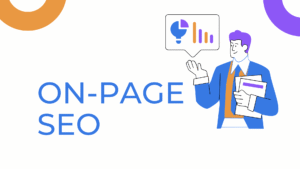What Is SEO & Why It’s Essential for Your Website
SEO is often described as both an art and a science—a crucial discipline for anyone looking to improve a website’s visibility in organic search results. From boosting domain authority factors to capturing qualified traffic that converts, understanding what SEO is and precisely how it works is absolutely critical for any marketer, business owner, or content creator navigating the competitive digital landscape.
SEO Meaning & Full Form

At its core, SEO stands for Search Engine Optimization, and it’s undeniably a foundational element of effective digital marketing. The SEO meaning encapsulates a strategic process involving:
- Optimizing a website’s technical configuration.
- Enhancing content relevance.
- Improving link popularity.
The primary goal is to enhance its visibility on search engine results pages (SERPs), such as those displayed by Google or Bing. Unlike paid advertising campaigns, which require a continuous budget, SEO focuses on attracting organic traffic. This distinction is vital because organic traffic, earned through merit and relevance, builds long-term, sustainable value for your brand without recurring ad spend, fostering genuine trust and authority over time.
How SEO Works – A Step-by-Step Guide

1. Technical SEO & Mobile-Friendly Site Audit
Technical SEO forms the invisible backbone of your website’s performance in search. It ensures that your site is easily crawlable, correctly indexable, secure, and loads quickly for all users. Key steps within this pillar include:
- Conduct a mobile-friendly site audit:
- Focus on responsive design, ensuring your site looks and functions flawlessly across all devices.
- Optimize page speed, as slow loading times deter users and impact rankings.
- Confirm the accessibility of critical CSS and JavaScript files to search engine crawlers.
- Result: A robust mobile-friendly audit improves potential rankings and dramatically enhances user experience, crucial given today’s mobile-first engagement.
- Implement HTTPS for enhanced site security: This is a direct ranking factor and builds user trust.
- Create clear, logical URL structures along with XML sitemaps: These elements act as a roadmap, guiding search bots efficiently through your website.
- Ensure proper crawlability: Avoid accidental blocking of CSS or JavaScript files, which can hinder search engines’ ability to render your page correctly.
2. Keyword Research & Search Intent Analysis
Keyword research is often considered the bedrock of any successful SEO strategy. It’s the process of discovering the exact words and phrases your target audience uses when searching for information, products, or services online.
- Go beyond broad terms: Instead of simply targeting “SEO,” delve into long-tail phrases such as “what is search engine optimization in digital marketing” and “how does SEO work step by step guide.” These longer, more specific phrases often indicate clearer user intent and can lead to highly qualified traffic.
- Understand search intent analysis: Discern the underlying goal behind a user’s query:
- Informational intent: The user is looking for knowledge (e.g., “what is SEO”).
- Navigational intent: The user is trying to find a specific website (e.g., “Google Search Console”).
- Transactional intent: The user is ready to make a purchase or complete an action (e.g., “buy SEO software”).
- Example: If users search for “mobile-friendly site audit,” they’re likely expecting tools, guidance, or a service—your content should deliver exactly that specific need.

- Result: Aligning your content with the user’s intent is paramount for relevance and user satisfaction, driving targeted traffic.
3. On-Page Optimization Checklist
Once you’ve identified your target keywords and understood user intent, the next crucial step is to optimize your content page by page. This on-page optimization checklist helps signal relevance and quality to search engines:
- Title tags & meta descriptions:
- These are often the first impression users get in search results.
- Include your primary or secondary keywords like “SEO meaning” or “full form SEO” naturally and compellingly.
- Craft them to entice clicks and accurately reflect your page’s content.

A real SERP result showing the title and description
- Heading structure:
- Implement a logical hierarchy using HTML heading tags (<h1>, <h2>, <h3>, etc.).
- Use <h1> for your main page title (e.g., “What is SEO and How It Works”).
- Use <h2> for core sections and <h3> for supporting points (e.g., “on-page optimization checklist”).
- Benefit: This structure aids readability for users and helps search engines understand your content’s organization.
- Alt text on images:
- Always include descriptive alt text for all images.
- Improves accessibility for visually impaired users.
- Provides another opportunity to explain visuals and boost keyword relevance for search engines.
- Content depth vs. readability:
- While comprehensive, in-depth content is highly valued, it must also be easy to consume.
- Smartly split your content using:
- Subheadings
- Bullet points
- Numbered lists
- Simple, direct language
- Result: This balance ensures your readers gain maximum value without being overwhelmed and signals content quality to search systems.
4. Content Strategy: Depth, Relevance, Readability
High-quality content is the magnet that attracts and retains an audience, and it must skillfully balance content depth vs. readability. To achieve what Google refers to as E-E-A-T (Experience, Expertise, Authoritativeness, and Trustworthiness), your content should go beyond superficial explanations. Include:
- Verifiable data, compelling case studies, and real-world examples of SEO success to back your claims.
- Clear, concise explanations, such as answering “what is SEO and how it works” with precise definitions and actionable practical steps.
- References to real-world tools and methodologies, like discussing a “mobile-friendly site audit,” an “on-page optimization checklist,” or the process of “search intent analysis” and an “internal linking strategy.”
Readers are looking for depth and comprehensive information, but complexity should never impede clarity. The most valuable content is both rich in detail and simple to understand, providing genuine utility to the reader.
5. Internal Linking Strategy
A well-thought-out internal linking strategy is a powerful, yet often underutilized, SEO technique for organic traffic growth. By strategically linking your deeper, more detailed articles from related content pages, you achieve several critical benefits:
- User engagement: Links keep users engaged on your site for longer, improving overall user experience signals.
- Improved crawlability: Links help search engines discover and index more of your pages efficiently.
- Distribution of “link equity”: Links pass authority between pages within your site, strengthening important content.
Best Practices for Internal Linking:
- Use descriptive anchor text: For instance, “read our mobile-friendly site audit guide” is more informative than generic “click here.”
- Link relevant pages: Connect content that naturally relates to each other (e.g., from an SEO basics article to deeper dives on “effective link-building techniques” or “bounce rate reduction strategies”).
This approach not only supports your SEO efforts but also greatly enhances site navigation and information flow.
6. Off-Page SEO & Effective Link-Building Techniques
While on-page and technical SEO focus on what you can control on your site, Off-page SEO revolves around activities performed outside your website to improve its search ranking. One of the strongest domain authority factors and most impactful off-page elements is backlinks—hyperlinks from other high-quality, relevant websites to your own. These backlinks act as powerful “votes of confidence” from other reputable sources, signaling to search engines that your content is valuable, trustworthy, and authoritative.
Focusing on white-hat link-building techniques is paramount for sustainable success. These ethical strategies include:
- Guest blogging: Writing valuable content for other reputable blogs in your industry that include a contextual link back to your site.
- Outreach to influencers or industry partners: Collaborating with others in your niche to earn natural mentions and links.
- Creating link-worthy content: Developing exceptional resources like comprehensive infographics, original research studies, or unique tools that naturally attract links because of their inherent value.
- Gaining editorial mentions: Earning natural mentions and links from authoritative publications and news outlets.
A solid link-building strategy reinforces organic trust and significantly raises your website’s visibility across search engine results.
7. Bounce Rate Reduction Strategies & UX
A high bounce rate—where visitors leave your website almost immediately after landing on a single page without interacting further—is a significant negative signal to search engines and can hurt your SEO. Implementing effective bounce rate reduction strategies is crucial for retaining visitors and improving overall user experience (UX):
- Engaging introductions and visuals: Hook your audience from the first few seconds with compelling headlines, captivating imagery, and introductory paragraphs that immediately address their query.
- Clear navigation and internal links: Make it easy for users to find what they’re looking for and explore more of your content through intuitive menus and contextual internal links.
- Fast page load and mobile-responsive design: As highlighted in the technical SEO section, a slow-loading site or one that’s not mobile-friendly will quickly deter visitors.
- Clear Calls to Action (CTAs): Guide users deeper into your content or funnel with clear, inviting CTAs that suggest the next logical step.
A positive UX directly supports meeting search intent and keeps readers on your site longer, sending positive signals to search engines about the quality and relevance of your content.
Core SEO Elements Every Marketer Should Know
For anyone looking to excel in the digital realm, here is a quick recap of the essential SEO pillars and their components:
Technical SEO:
- Mobile-friendly site audit
- XML sitemap creation
- Site speed optimization
Keyword & Search Intent Analysis:
- Understanding audience search queries
- Targeting long-tail phrases (e.g., “SEO techniques for organic traffic growth”)
- Aligning content with user intent
On-page Optimization Checklist:
- Optimizing titles, headers, meta tags
- Structuring content effectively
Content Quality:
- Balancing content depth vs. readability
- Adhering to E-E-A-T principles
Internal Linking Strategy:
- Strategically connecting pages within your site
- Improving navigation and distributing authority
Off-Page SEO & Link Building:
- Building domain authority factors
- Acquiring high-quality, relevant backlinks
UX & Bounce Rate Reduction Strategies:
- Engaging users
- Ensuring a smooth user experience
- Lowering the rate at which visitors leave your site quickly
Analytics & Continuous Audits:
- Consistently monitoring performance via Google Analytics and Google Search Console
- Identifying areas for improvement
Regardless of your industry niche or target audience, these elements collectively form the robust foundation for sustainable SEO success.
SEO Techniques for Organic Traffic Growth
To consistently grow organic traffic, it’s essential to employ dynamic tactics that are aligned with evolving user needs and sophisticated search algorithms:
Target long-tail keywords:
Reach highly specific and niche segments of your audience, who often have clearer intent.
Use search intent analysis for content formats:
Blogs for informational queries.
Dedicated product pages for transactional needs.
FAQs for immediate clarity.
Balance content depth vs. readability:
Cover topics comprehensively, but present information in a user-centric, easy-to-digest manner.
Earn high-quality backlinks regularly:
This continuous effort is crucial to build strong domain authority factors, which in turn significantly raises your site’s trust and credibility with search engines.
Over time, this strategic approach builds a consistent stream of high-quality organic traffic, reducing your reliance on recurring advertising expenditure and fostering genuine audience engagement.
Ongoing SEO Process & Best Practices
SEO is not a one-time setup; it’s a continuous, cyclical process that demands ongoing attention and adaptation. Here’s a proven workflow that emphasizes continuous improvement:
Audit:
- Regularly run mobile-friendly site audits.
- Perform comprehensive technical checks to identify and resolve any structural or performance issues.
Implement:
- Proactively improve your technical infrastructure.
- Optimize on-page elements based on your research.
- Consistently produce new, optimized content.
Build Links:
Actively promote your valuable content.
Earn backlinks through strategies like guest posts, infographics outreach, and building relationships within your industry.
Analyze:
Utilize powerful analytics tools like Google Analytics and Google Search Console.
Meticulously track your traffic, monitor keyword rankings, and measure user engagement metrics.
Refine:
Based on your analysis, make informed adjustments.
This could involve optimizing underperforming pages, refreshing outdated content, or even pruning content that no longer serves a purpose.
A quarterly audit ensures that your understanding of search engine optimisation meaning aligns perfectly with evolving search trends and continuous algorithm changes, keeping your website competitive.
Future Trends – AEO, AI-SEO & Voice Search
The landscape of SEO is constantly evolving, with new technologies and user behaviors shaping its future. Here’s what to expect and how to adapt:
AEO (Answer Engine Optimization):
Optimizing your content for AI-powered answer engines (e.g., Google’s Search Generative Experience, ChatGPT, Perplexity) by providing direct, concise answers easily extractable by AI.
GEO (Generative Engine Optimization):
Structuring content to be easily cited and summarized by AI models through clear headings, structured data, bullet points, and explicit definitions.
Voice Search:
Optimizing for conversational phrases, such as “how does SEO work step by step guide” or “best SEO techniques for organic traffic growth.” Content needs to answer natural language queries directly.
Structured Data:
Implementing schema markup and other forms of structured data to enhance visibility for featured snippets, rich results, and voice search results, helping search engines understand your content more deeply.
True SEO today means effectively bridging traditional optimization practices with a forward-thinking approach that embraces AI-friendly formats and new search modalities.
Conclusion & Action-Ready Mini-Guide
Summary
To recap:
Trends: From essential mobile-friendly site audits to the adoption of AEO/GEO principles, the growing importance of voice search, and the critical role of enhanced structured data.
What is SEO? It’s Search Engine Optimization—a pivotal pillar of digital marketing that strategically boosts your organic visibility online.
How it works? Through a synergistic blend of:
Technical SEO
Meticulous On-page Optimization
A robust Content Strategy
Effective Link-Building
A focus on superior User Experience (UX)
Ongoing audits
Next Steps
To kickstart or elevate your SEO efforts, here’s an action-ready mini-guide based on the principles discussed:
- Conduct a comprehensive mobile-friendly site audit to ensure responsiveness and performance.
- Research main and long-tail keywords relevant to your audience and content.
- Optimize your pages diligently using an on-page optimization checklist for titles, headers, and content structure.
- Produce in-depth, readable content that prioritizes E-E-A-T.
- Implement a strong internal linking strategy to enhance navigation and page authority.
- Launch off-page link-building campaigns to build domain authority factors through quality backlinks.
- Monitor performance regularly using Google Analytics and Google Search Console.
- Adapt your content for AEO/AI-search trends and optimize for conversational voice queries.
By following these steps, you’ll be well on your way to mastering SEO and driving sustainable organic growth for your digital presence.



